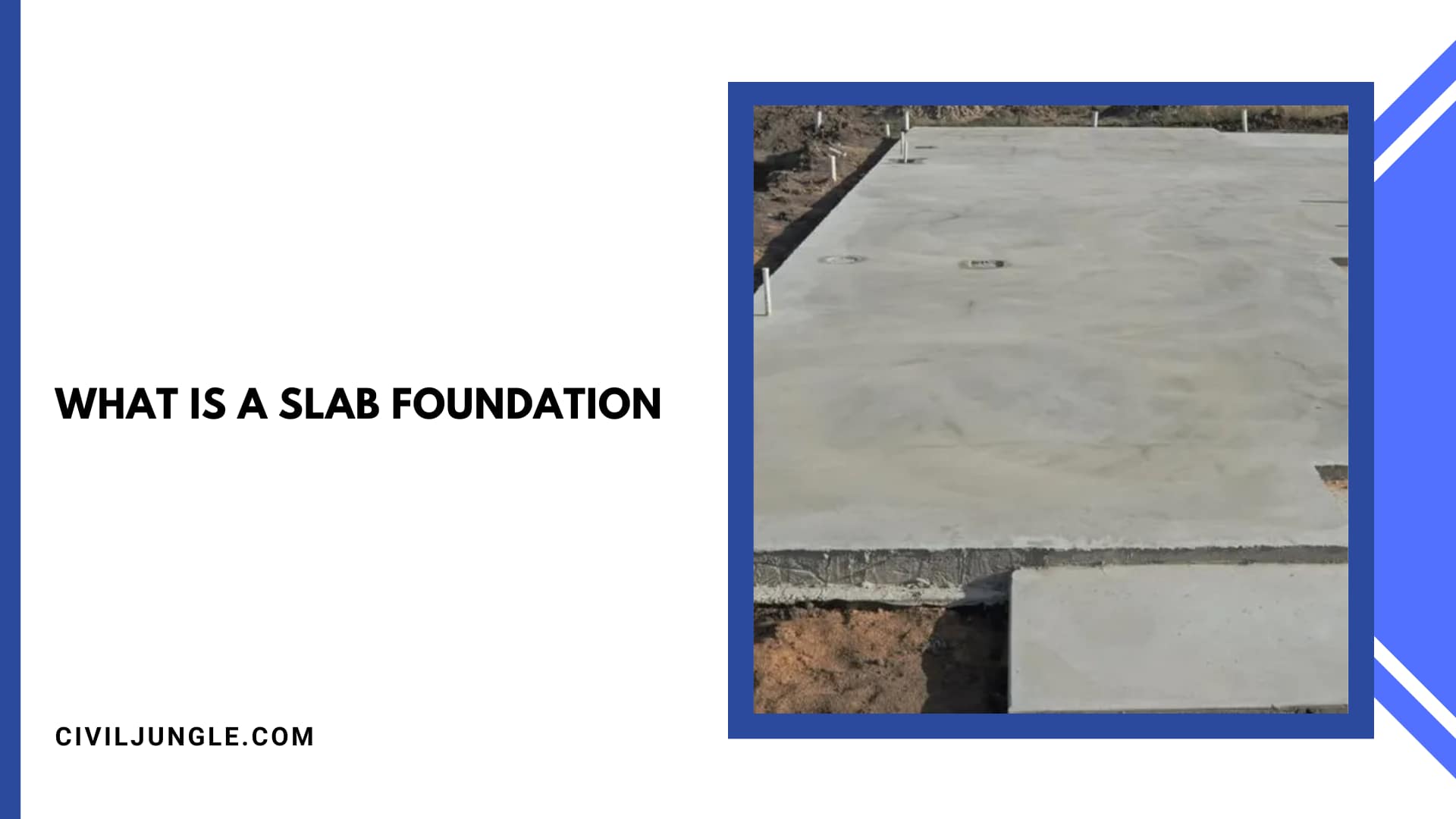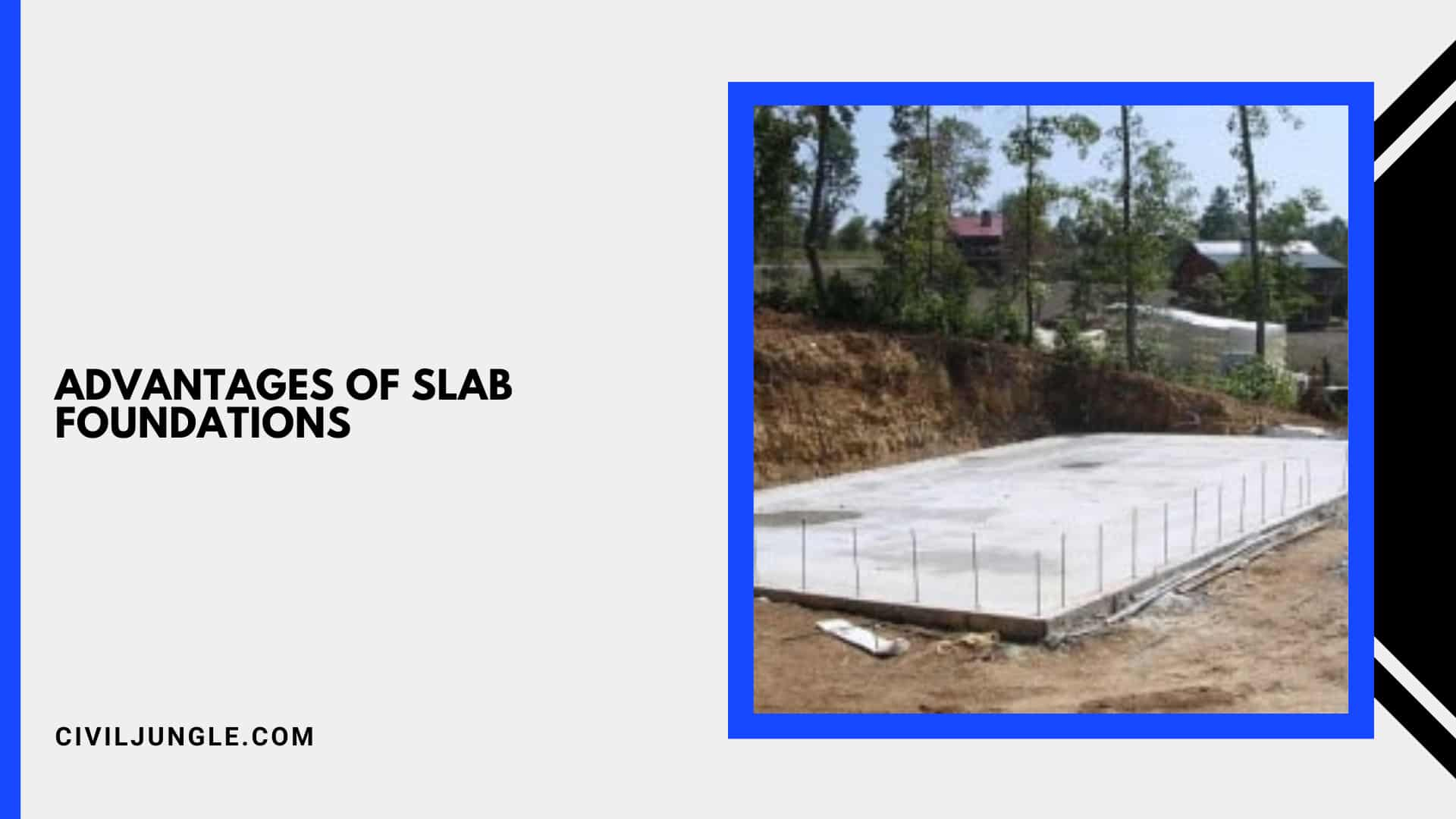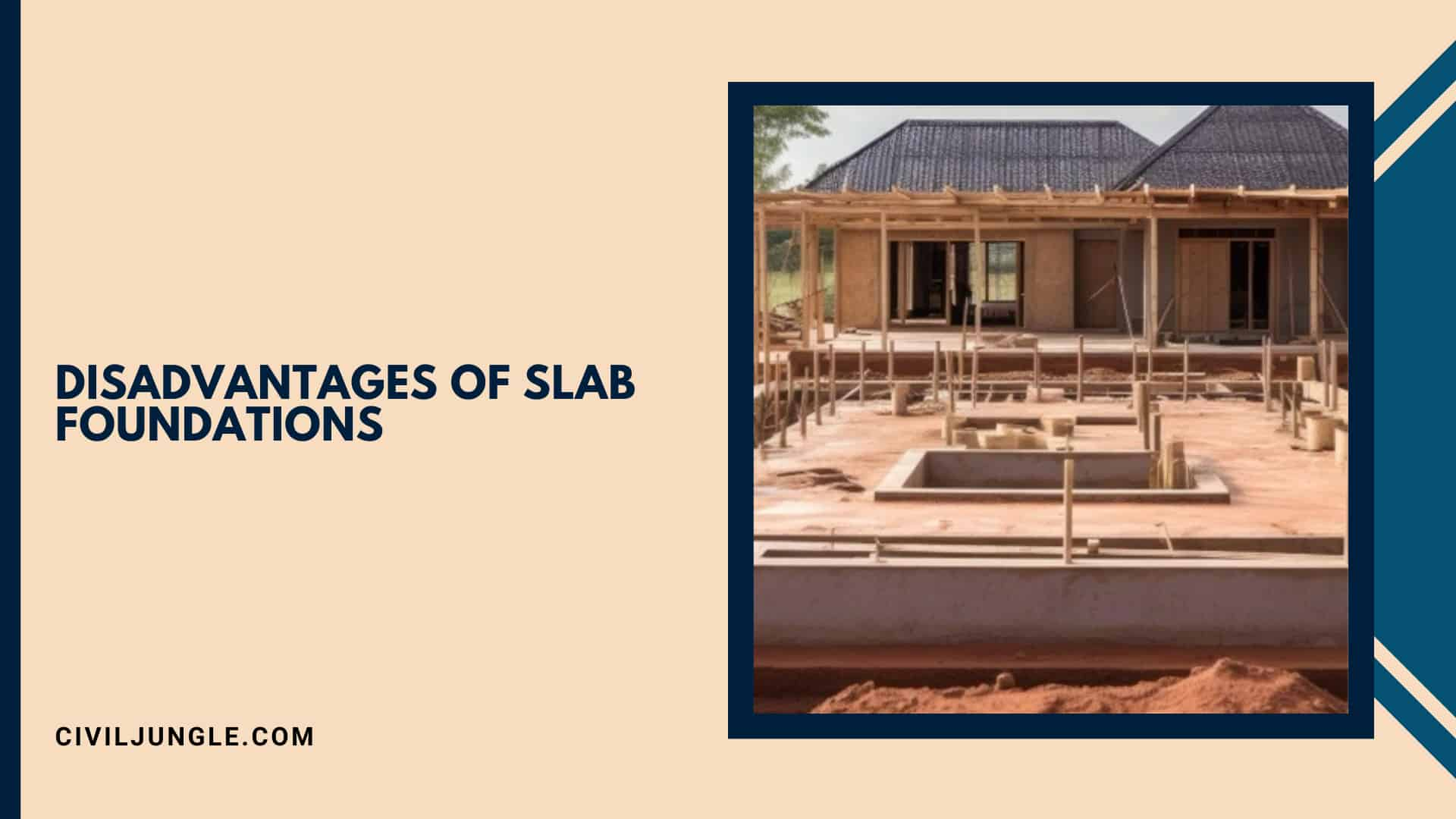Slab Foundations
Important Point
The slab foundation is a huge, thick cement plate that generally has a thickness of 4″–6″ in the center and was completely put on the earth at once.
In order to provide extra strength around the perimeter, the ends of the slab are thicker (as broad as 24″). Many foundations include post-tension cables, while others have steel rods strengthened (rebar).
These materials are utilized to make the sheet highly strong and able to carry the home or other structure’s load weight. The concrete plate is typically placed over a sand layer to enhance drainage conditions and function as a cushion.
There is no rolling area below a concrete slab. In this regard, this kind of foundation varies from home foundations with cellars: there is no floor space. Basements are usually found in the North, even if it’s quite cold.
A concrete slab foundation is mostly built on a property that has, as it should be, been classified. It’s very vital that the soil is graded because otherwise, owing to inadequate soil compaction the foundation might sink or settle.
Also Read: How to Fill Foundation Crack?
What Is a Slab Foundation?
For building construction, the base of the concrete slab and its work is extremely significant. In various procedures, it can be done. The basis of a structure is first of all part of walls, piers, and columns, which directly connect to the earth and convey weights to the earth.
Duo-fundamental concrete may be constructed due to soil diversity, rock-land size, and water conditions. The easiest and cheapest building material in construction works is among the many kinds of foundations.
Concrete slab foundations are more popular in warm climate countries in which the soil has less chance of freezing and cracking the foundation.
There are good reasons to build or buy a house on a slab, for example, financial savings and, in some cases, decreased danger of damage.
The drawbacks include the installation on the ground level, which takes up the living area, of heating and cooling equipment. Cracks may also be present.
The concrete slab foundation is an extremely important structural element that is used in structures to produce flat surfaces such as floors and ceilings.
There have been, therefore, several types of cement foundations based on a building’s length, length, and strength.
In construction work, there are basically three types of Concrete slab foundations. Consider, for example:
1. T-Shaped
The classic, most frequent form of foundation for construction and architectural works is this kind of concrete foundation. It can assist sustain large and tall structures, particularly in those places where the floor is unhealthy.
The commercial building base uses a higher amount of load when the ground is frozen. However, a T-shaped concrete base can avoid frozen ground damage.
2. Slab on Grade Foundation
In locations with no freezing of the earth, a slab-on-grade foundation is usually employed. A single concrete layer, numerous inches wide and cascaded all at one time, is the slab-on-grade foundation.
It is a cheaper basis than the above-mentioned T-foundation as just one concrete is necessary. It is constructed at the borders of the base to build integrated support, and reinforcement rods are put in to enhance strength on each thickened edge.
3. Frost Protected
This type of foundation is nearly like a slab-on-grade foundation since a gravel layer is initially established. The dominating variance comes from the stiff, polystyrene-covered sheets which are placed on the top of the gravel and outside the base wall before cascading the plate.
This is a good foundation, as it only advises one single pour like the slab-on-grade kind. Only for heated design is this base utilized.
Also Read: About Our Foundation Repair Methods
Advantages of Slab Foundations
Some of the excellent properties would be that the construction of this pier and foundations is often lower.
As wooden elements including floor joists, just like with pier as well as beam constructions, are unnecessary, this expense is reduced. Furthermore, as there is no crawl area, air cooling and heating expenses for utilities are reduced.
Another benefit of a concrete foundation is that it wouldn’t take much time to make it. In one day the slab itself is spilled out. Naturally, preparatory work is underway in advance.
The whole procedure may frequently be completed in four days from beginning to end, provided that the weather is not an issue. As they do not have a crawl area (or airspace), the air cooling and heating utility expenses are reduced.
No problem or rodents or insects are mold and mildew. It’s because the mold behind the plate has no room or the rodents have nesting space. They provide a broader selection of flooring alternatives, including concrete colored or scored.
Less time to dry: a concrete slab requires less time to dry. With little downtime, the building may carry on without delay. The concrete in a poured basement has to be healed and dried for several days.
Foundations of slabs minimized the danger of damage caused by floods and/or gas leakage, such as radon, from a cave, or from a rake into the home.
slabs are frequently built closer to the ground than households with cellars or rocks so the amount of stairs necessary to access the house is reduced. For individuals who are less physically capable, easy access is helpful.
Also Read: All About Foundation Problems
Disadvantages of Slab Foundations
The reason that there is no room under the concrete slab for storing or for installing and dissimulating the utilities implies that they lack a roof underneath them. All vents must thus be placed in the walls or in the upper attic, together with the entire work of the pipeline.
Because the plumbing of the home is placed underneath the base of the cement plate, leaks in the plumbing require repair by hammering the slab to correct the leak.
This may cause a great mess and is costly to accomplish as well. As plumbing leaks lie under the slab, until you discover that you have a very high water bill, you cannot identify them. Cracks may be a problem because a concrete slab is produced. Why concrete platforms fracture is essential to learn.
Although concrete is quite robust, it is likely to break because of weather and moisture fluctuations. Watering around these bases and maintaining a steady amount of moisture is crucial.
While termites and other pests cannot go directly under the home, the house can go through the walls since the house is generally closer to the ground. Pests can still infiltrate via walls. This is especially true when the façade is constructed of wood and sits on the floor.
Ductwork Requires Insulation: heat and air conditioning ductwork is often performed via the bottom floor to maintain correct temperatures. This implies it has to be extensively isolated.
Heating and refrigeration units Use Overground space: The floor may also have to be filled with an air conditioning unit and a furnace which would otherwise be utilized for other purposes.
Frequently Asked Questions (FAQ)
What Is a Slab Foundation?
A slab foundation is a large, thick concrete plate that is typically 4″–6″ thick in the center and is placed directly on the ground. It provides structural support for buildings or structures without a basement or crawl space.
What Are the Advantages of Slab Foundations?
- Lower construction costs due to the absence of crawl spaces or floor joists.
- Reduced heating and cooling utility expenses.
- Faster construction time compared to other foundation types.
- Minimal risk of mold, pests, or rodents.
- Various flooring options are available, such as colored or scored concrete.
What Are the Disadvantages of Slab Foundations?
- Limited space for utilities, requiring vents and plumbing to be placed in walls or upper attic spaces.
- Difficulty in repairing plumbing leaks as they are located beneath the concrete slab.
- Potential for cracking due to weather and moisture fluctuations.
- Increased risk of pests infiltrating through walls, especially if the facade is made of wood.
- Ductwork requires extensive insulation to maintain proper temperatures.
- Overground space may be occupied by heating and cooling units, reducing usable space.
What Are the Different Types of Concrete Slab Foundations?
- T-shaped foundations: Common for larger or taller structures, providing stability in varying soil conditions.
- Slab on grade foundations: Single concrete layer poured directly on the ground, suitable for areas with no freezing.
- Frost-protected foundations: Utilizes insulation sheets to prevent freezing, often used in heated designs.
How Do I Detect Issues with a Slab Foundation?
- Look for cracks in the concrete, especially zig-zag patterns or significant size variations.
- Check for uneven floors, doors out of alignment, or separation between door/window frames and bricks.
- Monitor for moisture issues, such as leaks or dampness, which can indicate foundation problems.
Can Slab Foundations Be Repaired?
Yes, slab foundations can be repaired using techniques such as slab jacking, crack filling, or adding additional support through pilings or piers. It’s best to consult with a professional foundation repair service for an assessment.
Like this post? Share it with your friends!
Suggested Read –
- All About Foundation Problems
- How to Fix a Settling Foundation?
- What Is the Step Foundation Repair Process
- Should I Buy a Home That Had Previous Foundation Problems?
- How to Identify Common Signs of Foundation Problems in Houses or Commercial Buildings?




Leave a Reply